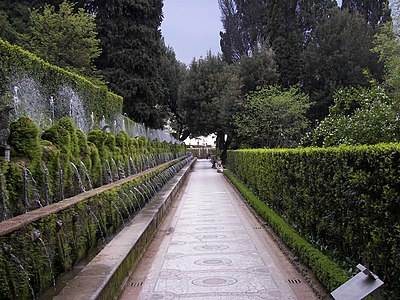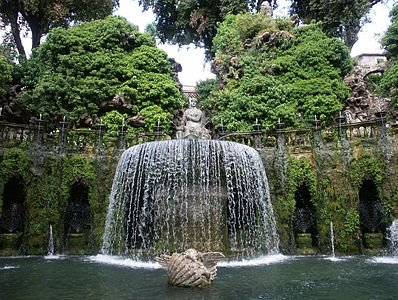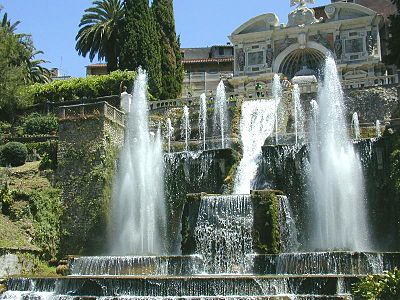Italy – Lazio – Rome Sept 30-Oct 3, Oct 5-8, 2021
I flew from Amsterdam to Rome, arriving at 23:00, and slept in the Rome airport. There were about 50 sleeping in the area above departures (where the airlines have booths). About 45 were sitting up in the seats with armrests, leaning against their luggage or draped over an armrest, none looking very comfortable. About 5 were laying down on the hard floor. I had my usual sleeping in airports gear: a comfortable Thermarest Uberlite, sleep sheet, sleeping bag (unzipped to function like a quilt, and backpacking pillowcase. I slept like a baby until woken up at 03:30 by a guard kicking me out from a darker place behind one of the booths. So I slept where everyone else was and actually slept in.
I got up at 07:30 and caught my noon flight on Vueling Airlines, about 2 hours to Rome. A train (8€) goes direct to Termini, the main railway station in Rome. My hostel, Roman Holidays was a 10-minute walk. It is a family-owned business and only average.
The next day, I caught the train to Villa Adriana and then walked 3.8 km into Tivoli.
TIVOLI. 28kms east of Rome.
Villa Adriana (Hadrian’s Villa) WHS. The ruins and archaeological remains of a large villa complex were built in 120 AD as a retreat by Roman Emperor Hadrian. He disliked the palace on the Palantine Hill in Rome. He governed from here in the latter parts of his reign requiring a large court and rooms for visitors and bureaucrats. After Hadrian, the villa was occasionally used by various successors. In the 4th century, the villa gradually fell into decline and was slowly looted of most of its statues. Christians used much of the building material to build churches. Most of the remaining marble and statues were removed in the 16th century by Cardinal Ippolito II d’Este.
The villa is vast with many pools, baths, fountains, and classical Greek and Roman architecture sat in landscaped gardens, wilderness, and farmlands. The buildings were constructed in travertine, brick, lime, pozzolana, and tufa. 30 buildings cover at least a square kilometer. Water was supplied by aqueducts feeding Rome so was on land lower than the aqueducts. Many structures were named after places seen by Hadrian in his extensive travels.
The Canopus features a long reflecting pool, representing the Nile lined by copies of famous sculptures.
Basically, it is one huge ruin where much is left to the imagination. 25€.including Villa Este + 4€ audio guide for Villa Adriana.
Get there. Train from Termini at 09:06 to Bagni, Tivoli (25 minutes). Get off at Bagni Station, a small town before Tivoli. A red bus waits outside (your train ticket is good for the bus). It departed at 09:43 to drive the 5.2kms to Villa Adriana – all included in the one price, but not at all clear from the ticket or the conductor (“I am not a tour guide, but I think you get off here for Adriana”!). Note these times are for when I did it, there are many other trains virtually on the hour. 3.60 E
The bus to Tivoli didn’t leave till 13:10 and it took exactly that long to walk to Tivoli and Villa Este. It went along a dirt road, pavement, and then a trail till finally hitting the road in Tivoli. I stopped and had great pizza, and then went to Villa d’Este. Once there I realized I had seen it before (another example of Nomad Mania not having places I’ve seen recorded).
Villa d’Este WHS. A 16th-century villa In the town of Tivoli, I had been here before (the gardens are unforgettable – a terraced hillside Italian Renaissance famous for its fountains.
The top floor has several rooms of religious art – paintings, sculpture brass, and photographs from the 1500s to the present. All the ceilings and upper walls are painted in the same busy style.
The Villa was commissioned by Cardinal Ippolito II d’Este (1509–1572), second son of Alfonso I d’Este, the Duke of Ferrara and grandson of Pope Alexander VI through his mother Lucrezia Borgia. The Este family had been lords of Ferrara since 1393 and were famous as patrons of the arts and of the humanist scholars of the Renaissance. As a second son, Ippolito was destined for a career in the church; he was named archbishop of Milan when he was only ten years old. At the age of 27, he was sent to the French court, where he became an advisor to the French King, Francis I, and in 1540 became a member of the King’s Private Council. At the age of thirty, at the request of the King, Pope Paul III made d’Este a cardinal. Thanks to his ecclesiastical and royal connections, he became one of the wealthiest cardinals of the time, with an annual income estimated at 120,000 scudi. He was a lavish patron of the arts, supporting among others the sculptor Benvenuto Cellini, the musician Pierluigi da Palestrina and the poet Torquato Tasso. While his income was enormous, he was always in debt. The new French King, Henry II, sent him as an envoy to Rome, where he played a major role in the social and political life of the city. He appeared destined to become Pope and used all of his money and influence toward that goal, but at the time of the Reformation and the Council of Trent, his extravagant style of life worked against him. His first candidacy for the papal position, in 1549, with the support of the French King, was blocked by the Habsburg Emperor. D’Este promptly withdrew his own candidacy, endorsed the Habsburg candidate, and was rewarded by the College of Cardinals on December 3, 1549, with the lifetime position of Governor of Tivoli. This new title suited d’Este because he was already a passionate collector of antiquities, and it gave him jurisdiction over the site of Hadrian’s villa and other sites just being excavated. He did not give up his ambition to become Pope. He was five times a candidate for Pope, but was never selected.
Tivoli had been a popular summer residence since ancient Roman times due to its altitude, cooler temperatures, and its proximity to the Villa Hadriana, the summer residence of Emperor Hadrian I. The position of Governor of Tivoli came with an official residence but it was not large enough for the enormous household of a Cardinal as prominent as d’Este, but it did have a spectacular view of the countryside below, including Hadrian’s villa, and an abundant natural water supply for fountains and gardens. He obtained an abundant supply of marble and statuary from the ruins of Hadrian’s villa.
The Villa and gardens in 1560–1575
In September 1555, however, he was accused of simony by Pope Paul IV and exiled. The Pope died in 1559, and the new pontiff, Pope Pius IV, rehabilitated d’Este and restored his title as governor of Tivoli. Construction began when he returned in July 1560. More land was needed and acquired through 1569. The vast construction site required the demolition of houses, public buildings, and roads. In 1568 the local residents filed twelve different lawsuits against the Cardinal but did not deter him from his project. Between 1563 and 1565, a huge amount of earth was excavated and used to construct new terraces; arcades, grottos, niches, and nymphaeums. The nearby river Aniene was diverted to furnish water for the complex system of pools, water jets, channels, fountains, cascades, and water games. The steep slope of the garden, more than 45 meters (148 ft) from top to bottom, posed special challenges. Canals were dug and 200 meters (660 ft) of underground pipes were laid to carry the water from the artificial mountain under the oval fountain to the rest of the garden. Following the aesthetic principles of the Renaissance, the garden was carefully divided into regular units, or compartments, each 30 meters (98 ft) across, laid out along a longitudinal median axis, with five lateral axes.
In 1566, the Cardinal made his fifth effort to be elected Pope, but once again he was defeated, and he was excluded by the new pontiff, Pope Pius V, from any more official appointments. He turned more and more of his attention to the decoration of his villa.
The frantic work on the project began to slow in 1569, probably due to the financial difficulties of the Cardinal, who had no more hope of being elected Pope and had lost his lucrative French positions. In the summer of 1572, he entertained one last important guest, Pope Gregory XIII. To prepare for the visit, the Cardinal redecorated the top floors of the villa and rushed the completion of the dragon fountain. The reception for the Pope cost him more than five thousand scudi forcing him to pawn his silver and other precious objects. Soon after the reception, on December 2, 1572, the Cardinal died in Rome, and was buried in a simple tomb in the church adjoining the Villa.
The gardens passed through family members who struggled with maintenance costs but carried out a major renovation of the gardens and water systems, as well as building a new system of fountains in the lower garden. After 1695, the Este family was unable to support the high cost of maintaining the villa, which they rarely used and which produced no income. The villa went into a long decline. After 1751, the furnishings were sent to Modena, and the antique sculpture was gradually removed from the gardens and sold to collectors. In 1796, the House of Habsburg took possession of the villa, after Ercole III d’Este bequeathed it to his daughter Maria Beatrice, married to Grand Duke Ferdinand of Habsburg. It was largely neglected and was twice occupied by French soldiers, who took away much of the decoration that remained.
Between 1850 and 1896, the dilapidated villa was restored. After the First World War, the villa was acquired by the Italian State, which began a major restoration in 1922. Campaigns of restoration and protection have preserved intact the famous features of the villa and gardens.
Gardens and Fountains. The fame and glory of the Villa d’Este were above all established by its extraordinary system of fountains; fifty-one fountains and nymphaeums, 398 spouts, 364 water jets, 64 waterfalls, and 220 basins, fed by 875 metres of canals, channels, and cascades, and all working entirely by the force of gravity, without pumps.
Neptune’s fountain

One hundred fountains

The Oval Fountain cascades from its egg-shaped basin into a pool set against a rustic nymphaeum.

The oval fountain, seen from the terrace
I then walked 1.4 km to the train station in Tivoli and had to transfer at Tiburtina for Termini. I had to buy a separate ticket for Termini, followed the large train board to track 6, and boarded the train without looking at the destination. When the conductor came through to check tickets, he informed me I was on a train to Bologna, in the north of Italy. He didn’t charge me the 62€ fee and gave me clear instructions on how to buy an emergency ticket on the same high-speed train returning to Rome for 62€ in 7 minutes. I had a pleasant journey working on posts and reading arriving at 9 pm, about 4 hours later than originally intended. This was one of my more crazy travel occurrences. This is one of the reasons I try to travel on the cheap – to make up for all the dumb mistakes that I seem to make.
The next morning, I was up early to return to the airport and fly to Lampedusa in the Pelagie Islands. They are a small group of islands much closer to Libya and Tunisia than to Italy but are considered part of Sicily.
I returned to Rome on Oct 5, slept in the airport, and returned to Roman Holidays to spend two days seeing all the Nomad Mania sites not seen on my previous two trips to Rome or added to the NM lists since.
